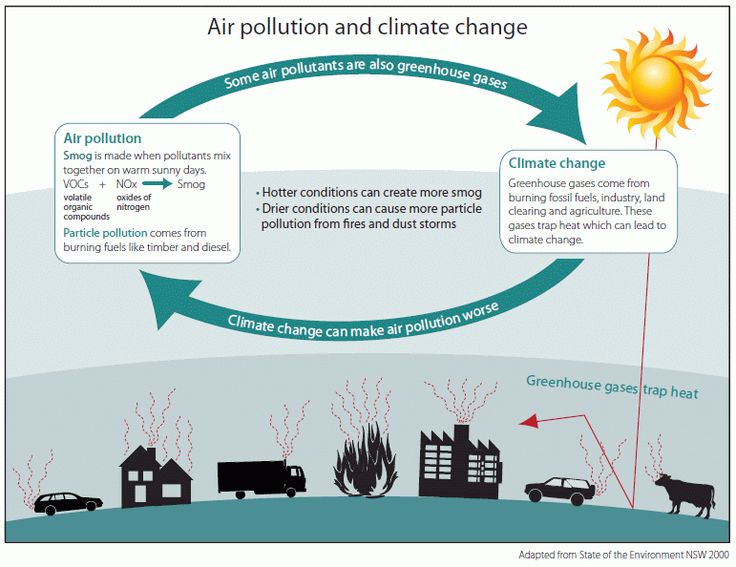Sometimes, when I'm having a conversation about climate change (as one does!), I hear people talk about our greenhouse gas emissions as pollutants. I've personally never really thought of them that way (even though, perhaps I should because they do overlap), because I tend to think of air pollution as particulate matter - soot, big puffs of black exhaust from the back of a truck, things like that. Greenhouse gas emissions seem categorically different to me - like secret pollutants we can't see. However, it's important to understand that regardless of how you conceive of GHGs and pollutants, our GHG emissions are affecting the more traditional air pollutants in ways it's important for us to understand.
Air quality and its effect on human health is in large part a function of the weather, which creates conditions that promote or depress the formation, concentration, deposition, dispersion, and transport of pollutants. Changing climate means changes in location, timing, and intensity of air pollution events. Ground-level ozone, the most noxious constituent of photochemical smog, is associated with a host of health problems and is strongly and positively correlated with temperature and solar radiation; increases in temperature and longer summer seasons correspond to increases in general ozone concentrations and the number of days violating air quality standards. Here's a short EPA podcast from 2016 called The Future of Breathing: Connecting Air Quality and Climate Change I'd like you to spend 2 minutes on (or read its transcript).
Particulate matter (PM) has even greater health effects than ozone; this pollutant is also linked to temperature and humidity in its formation. Forest fires also release many particulate air pollutants and toxic gases and are known to affect health. Forest fires are on the increase worldwide and forecast to escalate dramatically in the future.
Let's circle back to thinking about vulnerability and how people might experience this type of impact of a changing climate differently than those around them. The American Lung Association estimates 26 million people in the US are living with asthma. Poor air quality is just one potential indirect impact on human health that affects people with asthma more acutely.

Air pollution and climate change cycle.
Air pollution: Smog is made when pollutants mix together on warm sunny days. Volatile organic compounds + nitrogen oxides = smog. Particle pollution comes from burning fuels like timer and diesel. Hotter conditions create more smog and drier conditions can cause more particle pollution from fires and dust storms.
Air pollution leads to climate change with an arrow that reads: some air pollutants are also greenhouse gases.
Climate Change: Greenhouse gases come from burning fossil fuels, industry, land clearing, and agriculture. These gases trap heat which can lead to climate change.
Climate change leads to air pollution with an arrow that reads: Climate change can make air pollution worse.
